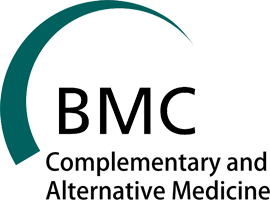
“Endometriosis has a significant negative impact on the lives of women, and current medical treatments often do not give sufficient pain relief or have intolerable side effects for many women. The majority of women with primary dysmenorrhea use self-management strategies (including self-care techniques or lifestyle choices) to help manage period related symptoms, but little is known about self-management in women with endometriosis.
The aim of this survey was to determine the prevalence of use, safety, and self-rated effectiveness of common forms of self-management.
Cannabis, heat, hemp/CBD oil, and dietary changes were the most highly rated in terms of self-reported effectiveness in pain reduction. Physical interventions such as yoga/Pilates, stretching, and exercise were rated as being less effective.
Self-management was very commonly used by women with endometriosis and form an important part of self-management.
Women using cannabis reported the highest self-rated effectiveness.”
https://www.ncbi.nlm.nih.gov/pubmed/30646891
https://bmccomplementalternmed.biomedcentral.com/articles/10.1186/s12906-019-2431-x


 “Major depressive disorder is a devastating psychiatric disease that afflicts up to 17% of the world’s population. Postmortem brain analyses and imaging studies of patients with depression have implicated basal lateral amygdala (BLA) dysfunction in the pathophysiology of depression. However, the circuit and molecular mechanisms through which BLA neurons modulate depressive behavior are largely uncharacterized. Here, in mice, we identified that BLA cholecystokinin (CCK) glutamatergic neurons mediated negative reinforcement via D2 medium spiny neurons (MSNs) in the nucleus accumbens (NAc) and that chronic social defeat selectively potentiated excitatory transmission of the CCKBLA-D2NAc circuit in susceptible mice via reduction of presynaptic cannabinoid type-1 receptor (CB1R). Knockdown of CB1R in the CCKBLA-D2NAc circuit elevated synaptic activity and promoted stress susceptibility. Notably, selective inhibition of the CCKBLA-D2NAc circuit or administration of synthetic cannabinoids in the NAc was sufficient to produce antidepressant-like effects. Overall, our studies reveal the circuit and molecular mechanisms of depression.”
“Major depressive disorder is a devastating psychiatric disease that afflicts up to 17% of the world’s population. Postmortem brain analyses and imaging studies of patients with depression have implicated basal lateral amygdala (BLA) dysfunction in the pathophysiology of depression. However, the circuit and molecular mechanisms through which BLA neurons modulate depressive behavior are largely uncharacterized. Here, in mice, we identified that BLA cholecystokinin (CCK) glutamatergic neurons mediated negative reinforcement via D2 medium spiny neurons (MSNs) in the nucleus accumbens (NAc) and that chronic social defeat selectively potentiated excitatory transmission of the CCKBLA-D2NAc circuit in susceptible mice via reduction of presynaptic cannabinoid type-1 receptor (CB1R). Knockdown of CB1R in the CCKBLA-D2NAc circuit elevated synaptic activity and promoted stress susceptibility. Notably, selective inhibition of the CCKBLA-D2NAc circuit or administration of synthetic cannabinoids in the NAc was sufficient to produce antidepressant-like effects. Overall, our studies reveal the circuit and molecular mechanisms of depression.”
 “Determining the mechanism of action (MOA) of novel or naturally occurring compounds mostly relies on assays tailored for individual target proteins.
“Determining the mechanism of action (MOA) of novel or naturally occurring compounds mostly relies on assays tailored for individual target proteins. “The present review will provide an overview of the neurobiology, epidemiology, clinical impact, and treatment of cannabis use disorder (CUD) in mood disorders.
“The present review will provide an overview of the neurobiology, epidemiology, clinical impact, and treatment of cannabis use disorder (CUD) in mood disorders. “∆9 –Tetrahydrocannabinol (∆9-THC) and cannabidiol (CBD), major psychoactive constituents of marijuana, induce potentiation of pentobarbital-induced sleep in mice.
“∆9 –Tetrahydrocannabinol (∆9-THC) and cannabidiol (CBD), major psychoactive constituents of marijuana, induce potentiation of pentobarbital-induced sleep in mice.